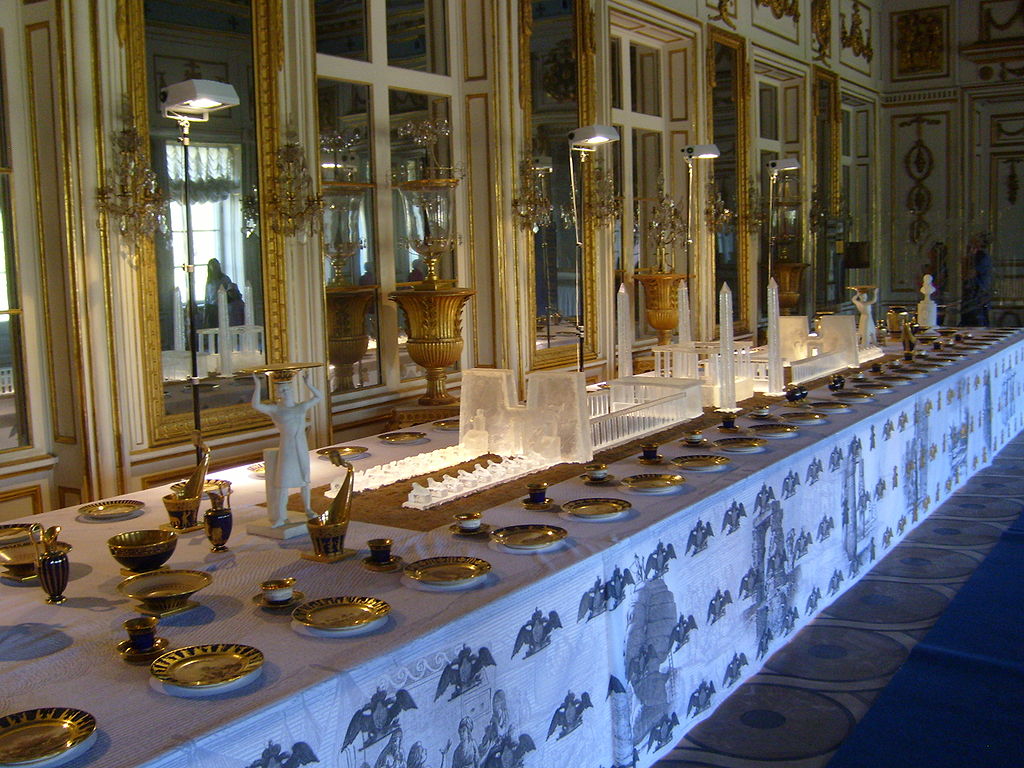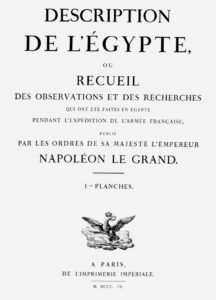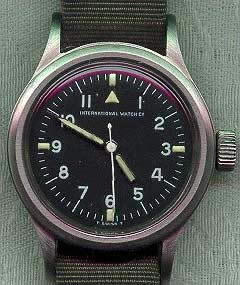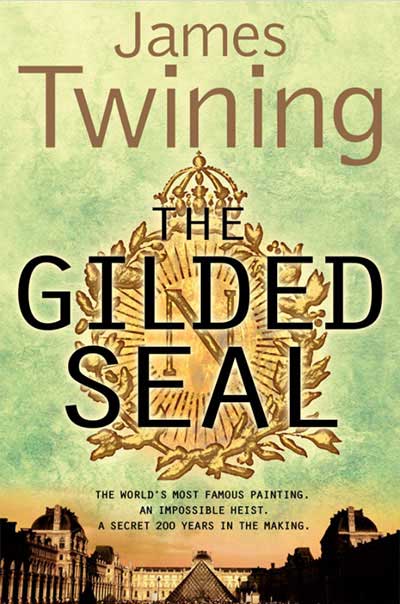Below you will find pictures and information on some of the beautiful works of art, from paintings to watches, that are mentioned in The Gilded Seal.
The Madonna of the Yarnwinder (1501)

The Madonna of the Yarnwinder was painted for Florimund Robertet, the Secretary of State for King Louis XII of France, in 1501. The painting was lost in France for several hundred years until an ancestor of the Duke of Buccleugh purchased it and installed it in his private collection at Drumlanrig Castle in Scotland in 1756.
The small painting (19in by 14in) depicts the Virgin Mary with the Christ child on her lap looking longingly at a yarnwinder, a wooden implement used to spin yarn. The yarnwinder serves as a symbol both of Mary’s domesticity and the Cross on which Christ was crucified and his mother’s inability to save him from the passion. He is turned away from her and his finger, like many representations of John the Baptist, points to heaven.
Some have further speculated that the yarnwinder may allude to the spindle of the Three Fates, and should thus be regarded as a metonymic symbol of death – a classical counterpart to the cross. (According to Greek mythology, the Fates Lachesis and Clothe command the spindle, from which their sister, the Fate Atropos, cuts off the thread of life.)
Although over the years doubts have been expressed as to the painting’s authenticity (da Vinci’s workshop produced up to eleven copies), the late Lord Clark, one of Britain’s most eminent commentators on Renaissance art, believed it to be genuine. His opinion was confirmed by Professor Martin Kemp of Oxford University, who used electro-spectography to authenticate the painting as one of the few truly authentic examples of the artist’s work – only fifteen genuine da Vinci’s paintings are believed to exist today.
The painting was stolen in 2003 by two thieves posing as tourists [click here for more]. Given that it is too well known and documented to be sold on the open market, some have speculated that it was stolen as a trophy asset, rather than for profit. The painting was however recovered in October 2007 following an undercover police operation.
In The Gilded Seal, Tom is asked to help recover the Madonna with the Yarnwinder following its theft from Drumlanrig Castle by Milo.
The Sèvres Egyptian Dinner Service
The Sèvres Egyptian Dinner Service that forms part of the Wellington Museum at Apseley House in London, is the grandest example of French porcelain to have survived from the Empire period.

The original idea for a dinner service inspired by Napoleon’s Egyptian campaign of 1798 to 1802 came from Vivant Denon, a diplomat, courtier and artist. Inspired by his experiences of Egypt, having been part of Napoleon’s expeditionary force, and flush with the critical success of his written account of his time there, Denon suggested to the head of the Sèvres porcelain that he make a desert service and centerpiece based on Egyptian architecture. Denon was at the time in a position of some influence, having been appointed as the director of both the Musée Napoleon and the Monnaie des Medailles, thereby overseeing all aspects of the arts.
The resulting centerpiece is one of the greatest ever produced in porcelain. Stretching for over twenty two feet in length, it comprises seventeen separate units of biscuit porcelain mounted on tôle peinte in imitation of pink granite. At the centre stands the temple of Philae flanked by four obelisks. Two smaller temples, comprising elements of the great temples of Dendera and Edu, complete the central group. These are joined by two colonnades to two pylons, monumental gateways, modeled on those found at Karnak. The outer groups are comprised of four seated figures, each pair lying at the head of avenues of scared rams. The temples, pylons, obelisks and colonnades are further decorated with random hieroglyphs, as at the time they could not be read.
The centre piece was accompanied by a magnificent desert service comprising seventy two plates, twelve ‘compotiers’, four sugar pots, two jam pots, four ice buckets, four baskets and for figures carrying dishes. Each plate was hand painted with a different Egyptian scene and decorated with gilt hieroglyphics.
The completed service was gifted to Tsar Alexander I of Russia in 1808 and can still be seen today at the Ceramic Museum at Kuskovo, near Moscow.
However this was not the end of the story. Following their divorce, Napoleon had in late 1809 offered the Empress Josephine 30,000 francs of Sèvres porcelain. Having been impressed with the Egyptian service she had seen being made on a trip to the factory, she decided to order another, albeit slightly different service, for herself. The completed service was delivered in 1812, but the Empress declared herself unsatisfied and returned it to the factory.
There it remained until 1818, when the new French King Louis XVIII offered it to the Duke of Wellington as an expression of his gratitude for his restoration to the throne. The service remained in the possession of the Dukes of Wellington until 1979 when it was purchased for the nation and installed at Apseley House where it can still be seen today.
In The Gilded Seal, a piece of the Egyptian Dinner service forms a vital clue in a trail left by Napoleon himself.
Description de l’Égypte (1809)

The Description de l’Égypte is a twenty three volume scientific description of ancient and modern Egypt that was the result of a unique collaboration between the 160 civilian scholars and scientists, known popularly as ‘Les savants’, who accompanied Napoleon’s military expedition to Egypt between 1798 and 1801, as well as about 2000 artists and technicians and engravers.
The vision of a single comprehensive publication amalgamating all that the French discovered in Egypt had already been conceived by November 1798, when Joseph Fourier was entrusted with the task of uniting the reports from the various scientific disciplines for subsequent publication.
In February 1802, at the instigation of Jean Antoine Chaptal, the French Minister of the Interior, and by decree of Napoleon, a commission was established to manage the preparation of the large amount of data for a single publication. The first test volumes of engravings were presented to Napoleon in January 1808. Initially published by order of the emperor (Napoleon Le Grand), successive volumes would be published by order of the king, and the last simply by order of the government.
The first edition usually consists of nine volumes of text, one volume with description of the plates and ten volumes of plates consisting of over 3000 individual engravings. Two additional volumes in Mammut size (also called Elephant plates) contain plates from Antiquites and Etat Moderne and finally one volume of map plates (Atlas), making for twenty-three volumes in all.
A second edition (known as the Panckoucke edition) was published by Charles Louis Fleury Panckoucke. The text was expanded in more volumes and printed in a smaller formats, new pulls were taken from the plates, and these were bound with many of the large format plates folded in the smaller format volumes. Today Taschen publishes a complete reproduction of the 10 volumes of plates, although not the 52 plates of the atlas volume.
The typographical quality of the texts, the beauty of the engravings, and the unusual format (the Mammut folio, for example, is 1 metre high x 0.8 metres wide) combine to make the Description de l’Égypte an exceptional work, although its scientific merit is sometimes debated. Only around 1000 copies were produced and today only a few national, state and university libraries own a complete copy (i.e text and drawings).
In The Gilded Seal, Volume One of the Description de L’Egypte hides a clue left by the Emperor Napoleon himself.
Panerai Marina Militare (1953)
Officine Panerai, the luxury Italian watchmaker, was founded in 1860 in Florence by Giovanni Panerai (1825–1897) and produced approximately 300 watches exclusively for the Italian Marina Militare between 1938 and 1993 .

As the official supplier of various nautical, signal, and measurement instruments to the Italian navy, in the second world war Panerai began producing diving watches which, with their distinctive winder protective clasp, became standard-issue tools for Italian Navy frogmen, SLC torpedo riders, and commandos.
Almost all their diving watches used movements and cases made exclusively by Rolex. The watches with Rolex movements only had hour and minute functions, as is still the case with today’s Panerai Base model.
The watch illustrated here is an extremely rare “Pre-Patent Marina Militare” Officine Panerai “Marina Militare” (Ref 6154) made in 1953 and still with its original water-repellent leather band and buckle. (It was sold at auction in 2005 for $74,750)
Aficionados of Panerai are known as “Paneristi”, a term coined along the lines of “Ferraristi”. Today, Officine Panerai belongs to the luxury goods conglomerate Richemont.
In The Gilded Seal, Tom wears a vintage Marina Militare when carrying out a daring high speed heist.
International Watch Corporation Mark 11 (1952)
IWC was founded in 1868 in the Swiss town of Schaffhausen, by American engineer and watchmaker Florentine Ariosto Jones. Jones had been a director of E. Howard & Co., in Boston, then America’s leading watchmaking company. His intention was to combine Swiss craftsmanship with modern American engineering technology to manufacture movements and watch parts for the American market.

The Mark 11 is considered by many to be one of the finest military watches ever produced. Made according to the strict 6B/346 specification laid down by the British Military of Defense (MoD), it was issued to navigators in both the RAF and later the Australian RAAF. Unusually, the watch was produced by both Jaeger-LeCoultre and IWC, albeit with their own movements and small differences in a few design features. IWC itself supplied Mark 11s from 1949 until 1983 when it was decommissioned, having gone through several iterations and developments.
The watches are housed in a stainless steel case and have a strong claim to be the first wristwatches in the world designed from scratch to be anti magnetic – they feature a very thick iron dial, which is cup shaped and so covers the side of the movement; the movement’s iron cover is similarly shaped and rises to meet the dial sides. This means that the movement is completely encased in a non magnetic “Faraday cage”, thereby providing a high degree of anti magnetic shielding.
The watch illustrated here was made in 1952, the original 1949 face having been redesigned to improve its visibility by replacing the 12 with an arrow and making the hour hand broader and shorter. It is known as a “no-T” variant, the T referring to the Tritium based luminous material used after 1963 and denoted (on RAF models) by a capital T in a circle on the lower watch face. The previous “no-T” variants such as the one shown here, used radium based luminous compounds which the MoD later realised posed a health risk to its officers.
In The Gilded Seal, Milo wears a “no-T IWC Mark 11.




